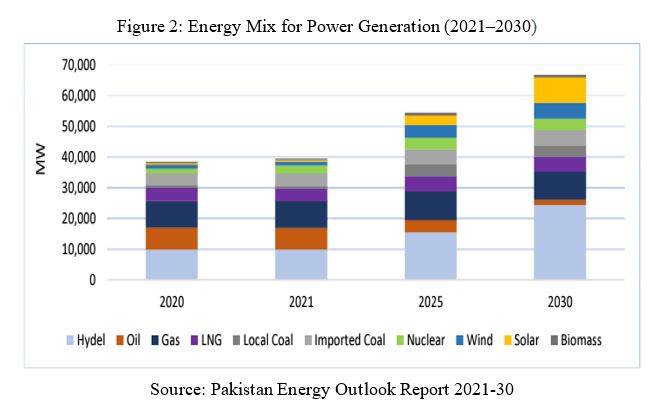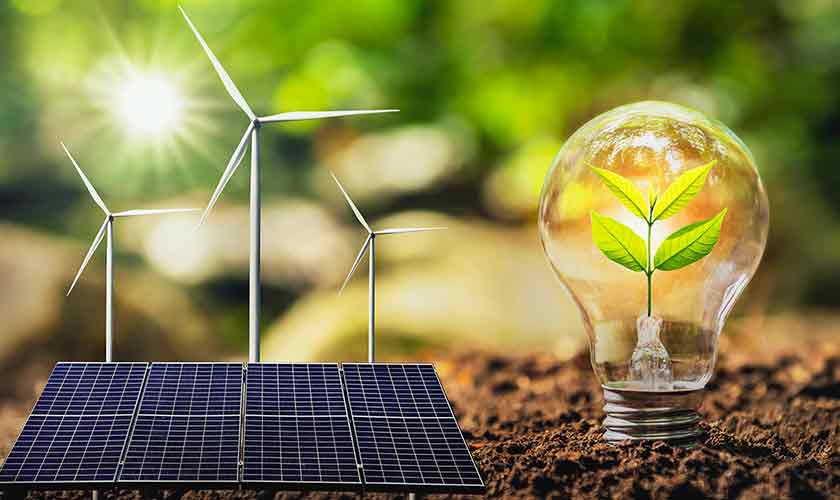Pakistan’s energy sector faces challenges due to heavy reliance on imported fossil fuels. A shift towards hydropower, renewables, and domestic resources is essential for long-term sustainability, economic growth, and energy security
Pakistan’s energy sector is vital and at a critical juncture for economic growth and national security. Rising demands and limited resources have escalated to an urgent need for a balanced energy mix. This is essential to reduce reliance on costly imports and is a pressing necessity for long-term sustainability. To ensure energy security in the long term, Pakistan needs to diversify its energy mix and transition from thermal dominance to hydropower.

Figure 1 Pakistan Primary Energy Mix FY 2023-24

Table 1 Installed Capacity and Electrical Generation Mix of Pakistan FY 2023-24
Pakistan’s overall energy mix comprises 27.03% oil, 24% natural gas, 24.83% coal, 7.54% hydroelectricity, 5% nuclear energy, and 12.19% other resources (Figure 1). The country’s installed electric power generation capacity stands at 46,221 MW, which includes 52.09% thermal, 25.56% hydel, 17.43% nuclear, 4.58% renewables, and 0.35% imported electricity (Table 1).
Pakistan’s energy mix predominantly relies on thermal power, and it is heavily dependent on imported fossil fuels due to its limited and depleting domestic oil and gas reserves. This dependency results in several challenges for the country. Nearly 30% of Pakistan’s foreign exchange is consumed by fuel imports, creating a significant economic burden and exposing the country to external shocks.
Much energy is generated from costly imported fuels, compounded by substantial circular debt (PKR 2.6 trillion) of the energy sector, and policy inefficiencies have raised energy tariffs. It has increased unaffordability for households and industries, impacting productivity. Additionally, Pakistan’s domestic natural gas reserves are rapidly depleting due to rising demand, deepening the nation’s reliance on imports and making the current energy mix unsustainable. As energy demand continues to surge due to rapid population growth, industrialisation and urbanisation, Pakistan’s fossil fuel-based energy system faces increasing pressure, jeopardising economic growth and energy security.
To encourage private sector participation and investment, the government has planned to develop 24 new power projects, 22 of which will focus on RE. These projects are expected to add 7,460 MW to the national grid by 2032
To address these challenges, the government of Pakistan has introduced several strategic policies aimed at reducing reliance on imported fuels and increasing the use of indigenous energy resources. The National Electricity Plan 2023-2027 targets a significant shift in the energy mix by increasing the share of local energy resources to 60% by 2025 and 75% by 2030. To achieve these objectives, the government has launched various initiatives.
Among the key initiatives is the Fast-track Solar Initiative, a government program that aims to add 6,000 MW capacity through solar PV projects across different regions of Punjab. This initiative involves installing solar panels in various sites in Punjab province. The Integrated Generation Capacity Expansion Plan 2022 ensures that no new power plants using imported fuels will be added to the national grid, marking a shift toward more sustainable and locally sourced energy solutions.
The government is planning to build new and expand existing mega-hydropower projects, such as the Mohmand Dam, Dasu Hydropower Project, Diamer Basha and Tarbela. These projects are expected to increase Pakistan’s hydropower capacity from 10,635 MW to 19,500 MW by 2029. Simultaneously, the expansion of renewable energy (RE) sources is being pursued, with plans to add 13,391 MW from solar and wind power projects of power by 2031.
In addition to hydropower and renewables, efforts are being made to increase coal and nuclear energy. The expansion of Thar coal mining projects aims to increase the share of domestic coal in electricity generation. Furthermore, a new 1,200 MW nuclear power reactor is under development at the Chashma site to contribute to the country’s energy supply.

Finally, to encourage private sector participation and investment, the government has planned to develop 24 new power projects, 22 of which will focus on RE. These projects are expected to add 7,460 MW to the national grid by 2032. As a result of these policies, the government projects a decrease in fossil fuel power generation to 31% in the next six years (Figure 2). However, with thermal power generation comprising half of the energy mix in 2024, these projections seem unrealistic, but if the government achieves the policy targets timely manner by completing the pipeline before 2030, it can give hope for setting future energy targets.
Domestic resources like hydel and coal can substitute imported thermal power generation and expand nuclear energy capacity for stable supply and resilience to external price volatility
Looking ahead, Pakistan’s energy security hinges on a diversified and cost-effective mix that ensures long-term sustainability and affordability. At least over the next 30 years, strategic energy planning must prioritise efficiency, resource optimisation, and reduced import dependency. While multiple energy sources are available, each presents distinct opportunities and challenges that require a balanced, forward-thinking approach. A critical evaluation of alternative energy options in Pakistan reveals the following key insights:
- Hydropower is the cheapest and cleanest renewable source of energy. Pakistan’s total exploitable hydropower resources are ~41,045 MW. However, the installed capacity of hydropower generation is only 10,635 MW, or just about 26% of the exploitable resources, and is far from being realised. Future water scarcity may limit the potential.
- Non-hydro renewable sources, particularly solar and wind energy, hold substantial untapped potential in Pakistan. With respective total generation capacities of 40,000MW and 346,000MW, these resources offer a promising path towards a sustainable energy future. Despite their intermittency, their potential to significantly contribute to the energy mix is a beacon of hope. However, as per Nationally Determined Contribution 2024, The infrastructure investment needed to scale RE in Pakistan is estimated at USD 348 billion by 2030. It presents a significant economic barrier to immediate RE integration in the short term.
- Pakistan’s local coal reserves have the potential to generate 100,000 MW of electricity for over 200 years, and coal could help reduce dependency on imported coal. However, limited infrastructure, financing, and technical expertise hinder the exploitation of these reserves.
- Nuclear energy is also a stable source of power generation. It provides a reliable long-term supply unaffected by fuel price fluctuations. However, Pakistan faces challenges in expanding its nuclear fleet due to political, economic, and regulatory hurdles.
The future energy policy needs to incorporate these alternate resources in the correct energy mix to ensure economic growth in the short term and sustainable development in the long term. At present, the primary issue of Pakistan is economic growth that is impacted by an imports-driven energy mix. Domestic resources like hydel and coal can substitute imported thermal power generation and expand nuclear energy capacity for stable supply and resilience to external price volatility. Simultaneously, the RE should be gradually integrated into the energy mix in the longer term after achieving economic development to ensure energy security and alignment with global sustainable development goals.
Pakistan’s energy mix relies heavily on imported fossil fuels, creating economic and security challenges. However, the path to a diversified and sustainable energy mix is not a distant dream. It is within reach with strong government commitment, achievable and realistic targets, and improved energy sector efficiency and implementation capabilities.





